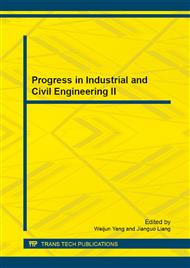p.358
p.363
p.369
p.373
p.378
p.386
p.390
p.396
p.402
A New Parameter to Evaluate Liquefaction Resistance of Saturated Sand under Complex Dynamic Stress Paths
Abstract:
Foundations are often subjected to complex dynamic stresses which result from ocean wave, vehicle or seismic loads. In this paper, four series of tests under different dynamic stress paths were carried out on Fujian standard sand with hollow cylinder apparatus, to investigate its liquefaction resistance. Test results showed different strength of specimens under different dynamic stress paths, when using the traditional evaluation index: maximum cyclic shear stress. A concept named as load efficiency (E) was proposed in this paper, which is defined as definite integral of dynamic shear stress on time in a single cycle. E is a new parameter to characterize liquefaction resistance of non-cohesive soil, attempting to normalize the effect of different shear modes, in which the shear stresses are constant or change periodically under different dynamic stress paths. Test results showed that in the isotropic consolidation condition, the relationship between E and failure cycle Nf is nearly linear in the dual-log coordinate.
Info:
Periodical:
Pages:
378-385
Citation:
Online since:
September 2013
Authors:
Price:
Сopyright:
© 2013 Trans Tech Publications Ltd. All Rights Reserved
Share:
Citation:


